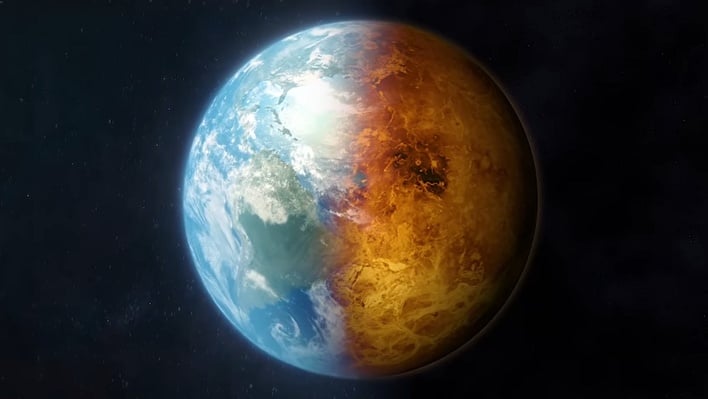NASA Says Earth Has An Evil Cosmic Twin And Her Name Is Venus

Venus is the second closest planet to the Sun at a distance of around 67 million miles (108 kilometers), and is Earth's closest neighbor. It is about the same size as Earth and has a similar structure, which is why the planet is called Earth's twin. However, that is where the similarities tend to end.
Earth's twin rotates extremely slowly on its axis, with one day on Venus lasting 243 Earth days. Due to its closer proximity, the planet orbits the Sun faster than Earth, however, so one year on Venus is equivalent to about 225 Earth days. This actually makes a Venusian day longer than its year, according to NASA. The planet also rotates backward on its axis, meaning the Sun rises in the west and sets in the east.
The planet has a solid surface peppered in volcanoes, rifts, and mountains, along with volcanic plains and boundless plateaus. The surface of Venus is less than a billion years old, and NASA says it could be as young as 150 million years old. From a geological standpoint, this is rather young. Scientists are a bit baffled as to exactly what occurred that made Venus completely resurface itself.
When it comes to the planet's atmosphere, it is quite different than that of Earth's. It is shrouded in 15 mile (24 kilometer) thick, toxic clouds of sulfuric acid. Scientists say this causes the air to smell like rotten eggs. The thick atmosphere traps heat, and in turn creates "a runaway greenhouse effect." This makes it the hottest planet in our solar system, with temperatures hot enough to melt lead. The greenhouse effect gives rise to temperatures over 900 degrees Fahrenheit (about 482 degrees Celsius).
Dr. Lori Glaze, NASA Director of Planetary Science, explains, "Somewhere along the way they went two different very paths." She continued, "Some like to say Venus went bad, or something went wrong. What I like to say is that somewhere along the way, something good happened on Earth."
NASA and ESA have joined together on a mission to find out why Earth and Venus turned out so differently. The two space agencies plan to spend a decade exploring this question with three different missions: DAVINCI, VERITAS, and En Vision.

